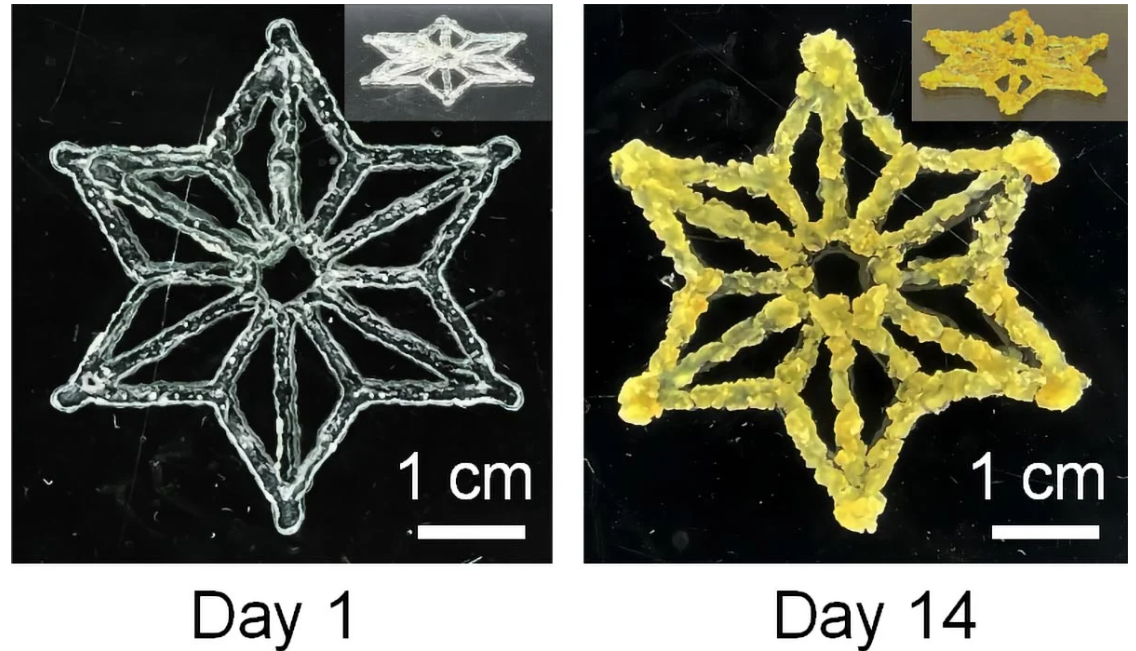"Between day one (left) and day 14 (right), plant cells 3D printed in hydrogel grow and begin flourishing into yellow clusters. Credit: Adapted from ACS Central Science 2024, DOI: 10.1021/acscentsci.4c00338" (ScitechDaily, Crafting Programmable Living Materials With Synthetic Biology & 3D Printing)
The synthetic DNA-manipulated biomaterials revolutionized 3D printing technology. The ability to combine species makes it possible to create large-size biological structures. That follows certain shapes. But when that technology is connected with 3D printing technology, that makes the ultimate tool. The DNA-manipulated cells can create the LEGO bricks that the 3D printers can put in certain places. The ability to connect corals and starfishes makes it possible to create the structures, that the bioprinter can put in certain places.
The silicon algae's shell genome can connected with the trees. And that can create trees with silicon shells. Genomes from electric eels can turn vegetables into energy producers. Energy trees are the tools that can solve the part of climate change.
The ability to connect spider's silk genomes to cotton and hemp turns their fibers into the spider's silk. Make the revolution in the protective clothes. The genetically engineered bacteria can also create oil. That chemists can use to create synthetic materials. And without climate change, those genetically engineered bacteria can create gasoline by using bacteria cultures.
Some ideas in oil refinery platform's tanks will put the bacteria that turn the biomass into oil in the anaerobic environment. Then the system pumps carbon dioxide to those chambers that make bacteria create the oil. This process is not a very good idea. In the time of climate change.
Genetic engineering makes it possible to create a large mass of things like antibiotics and other medicals. The possibility to manipulate DNA gives unlimited opportunities for R&D workers to create things. Like cells that create electricity. Electric eels can give 600-850 volt electric impulses, and those cells can used as power sources for robots.
The biological power source is a good replacement for fuel cells in small-size, low-power systems. The biological batteries need only nutrients. And if those cells are connected with vegetable cells. That makes it possible to use the nutrients that are created for plants. These kinds of systems are the fundamental tools in mobile technology.
https://scitechdaily.com/crafting-programmable-living-materials-with-synthetic-biology-3d-printing/





No comments:
Post a Comment
Note: Only a member of this blog may post a comment.